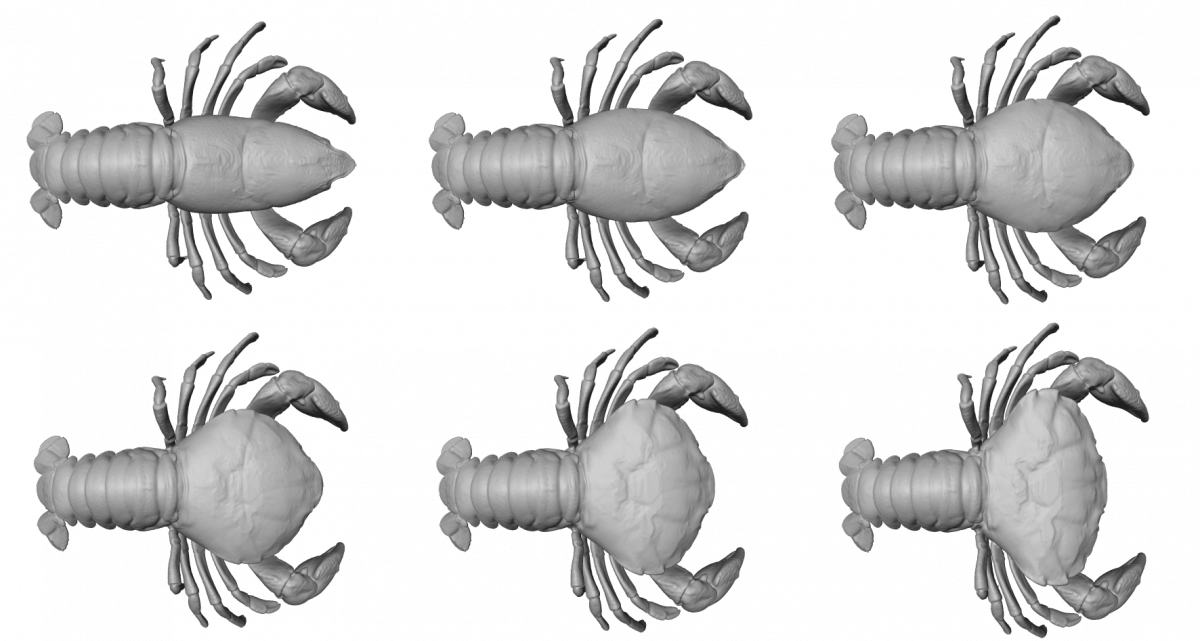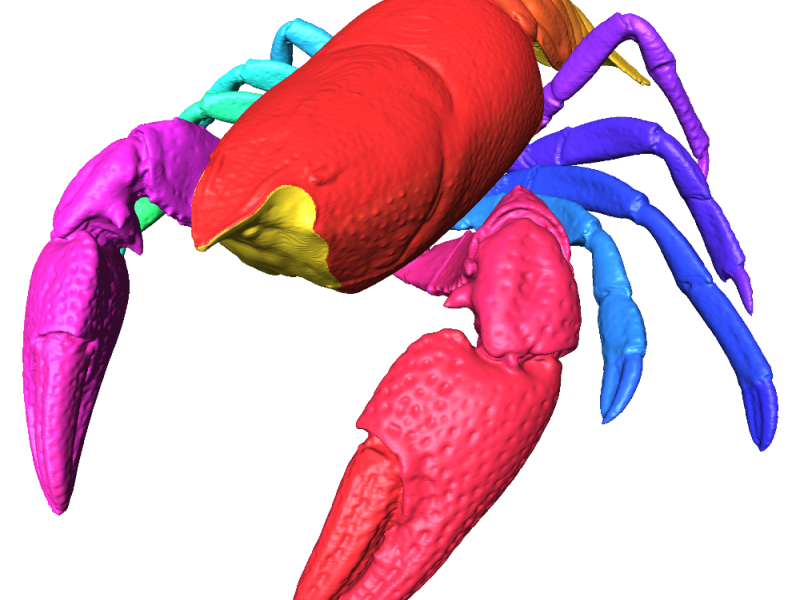The project is part of the so called 'Basisprojekt' Attention & Form within the DFG Cluster of Excellence 'Bild Wissen Gestaltung'. The aim of the project is to analyze the shape of crabs (short tailed crawfishes) and to compare them to long tailed crawfishes in order to quantitatively analyze differences between them. In contrast to previous research we will compare the shapes three-dimensionally. Therefore 3d shape models for both groups are build, compared, and finally combined in order to assess transitions from a psychological point of view. The latter is analyzed to identify when observers visually categorize the shape of a crawfish as long- or short-tailed.
Shape Morphing for Psychological Experiments
A common theory in psychology assumes that mental representations of objects are used during the object recognition process of humans. These representations are flexible and can change due to new information (for example an input stimulus). This effect is called adaptation effect and was shown for the recognition of human faces. Now, the adaptation effect is studied for the categorization of biological objects, namely crabs and lobsters. Until now, simple 2D images showing an interpolation from crab to lobster have been used for psychological tests. The goal of this work is to morph between 3D surface models of a crab and a lobster from given CT scans. Controlled experiments require that only one part (for example the carapax) of the animal is changed, thus we need local instead of global mesh morphing.
Morphing Workflow
- Preprocessing and segmentation of a crab and a lobster in given CT scans
- Generation of a smooth manifold surface
- Patchification of the two surfaces into corresponding areas that are homeomorphic to a disc
- Creation of surface correspondence: Each patch is parameterized to the unit disc using a convex combination map
- (Local) surface interpolation to create sensible intermediate surfaces using Poisson interpolation

Interpolation (from left to right and top to bottom): Image series showing the interpolation of the carapax while the rest of the lobster surface remains fixed
